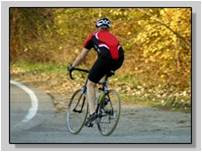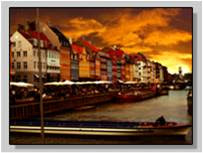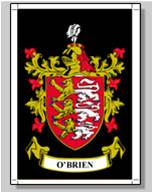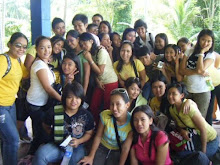1. Please bring one photo taken inside or within the college, 3R with boarder. Use your DIGITAL CAMERA and not your awesome cellular phones. Take one full shot of any subject of your choice. This should be pasted on a clean, short bond paper.
2. Bring the following:
3 white cartolinas
pair of scissors
10 news article cutouts from old newspapers (preferably broadsheet; this will be per group basis)
picture cutouts (photographs that can be used as type of photos for news; please do not bring photos from fashion/travel magazines)
glue
old newspaper (one per group)
Groups 4 and 5 - You will have your presentation on March 06, 2010.
Rozeann - Please send me the soft copy of written reports not later than Wednesday, 02.24.2010. I will just get the hard copy on our next meeting.
Monday, February 22, 2010
IMPORTANT ANNOUNCEMENT
Guys,
This is what you have ever hoped for.
We might not have our class this coming Saturday, 02.27.2010.
Dessa - Please confirm with the department if this is still related to the National Games. Text me for the update.
As of this writing, there are 27 albums uploaded for Valentine's Day and Chinese New Year on our online gallery. How about the rest? Last day for uploading of photos will be on Wednesday, 02.24.2010.
Regards,
Sir Edong :)
This is what you have ever hoped for.
We might not have our class this coming Saturday, 02.27.2010.
Dessa - Please confirm with the department if this is still related to the National Games. Text me for the update.
As of this writing, there are 27 albums uploaded for Valentine's Day and Chinese New Year on our online gallery. How about the rest? Last day for uploading of photos will be on Wednesday, 02.24.2010.
Regards,
Sir Edong :)
Friday, February 19, 2010
REQUIREMENTS LONG OVERDUE
Class,
Since we are having long and extended vacation, we have some requirements that were not submitted on time. You might want to follow the ff:
For Portfolio
I have already selected the best portfolio for binding (hard bound).
Rush Hour Michael Joe Delizo
Chinatown Arianne Palma and Krystal Sinay
Poverty Kim Reyes
Quiapo Dennis Aguete and Marjorie Velasquez
Luneta Julie Ann Virata and Edyssa Obemio
Julie Ann - Please work with the group and come up with the best layout for the portfolio. I want the group to use a design that is customary for the portfolio. I also suggest that for each theme, there should be a blank page where the theme (ex: Luneta) will reflect. Instead of using wallet size prints, you will be reproducing the photos and this time it all should be 3R, with boarder. Two photos per page will do. I also want the photos to have the same placements per page.
Note : For those who hasn't submitted their portfolio, please work on it the soonest. Otherwise you will be having INC on your classcard. Portfolio must be submitted on Monday, Feb 22. I will text Dessa for the details as to where you will submit the portfolio. You may now get all your porfolio at the faculty room.
For Chinese New Year and Valentine's Day
Please upload all your photos on our online gallery NOT LATER THAN SUNDAY, Feb 21. Please mirror Rozanne's format. Copies of photos will be submitted on our next class.
Group 4 and 5
We will have the presentation on our next meeting. The workshop will be conducted on March 6 or March 13.
Rozanne - I will be sending you an email over the weekend with regards to the result of the mid term examination. Discussion will include areas where we need to focus on the workshop based on the lowest number of scores per topic.
Final Examination will be discussed on our next meeting.
I will see you all on Saturday. Same time. Same place. Same faces :)
p.s. for any questions/clarifications, you may direct all your queries to Dessa.
Regards,
Sir Edong :)
Saturday, February 13, 2010
Feb. 14 , 2010 Photo Journalism
Good Day!
Kindly upload your new pictures in the Chinese New Year/Valentines Day Folder. The album will be now created individually, entitle it in your full name. (eg. Delizo, Michael Joe T.)
Thanks!
-Michael Joe
Kindly upload your new pictures in the Chinese New Year/Valentines Day Folder. The album will be now created individually, entitle it in your full name. (eg. Delizo, Michael Joe T.)
Thanks!
-Michael Joe
Monday, February 8, 2010
By-lines
Bylines tell who wrote an article.
They are a small element in books, magazines, newspaper, or newsletter design but certainly important to the author. In some cases, bylines may be used to give credit for photographs or illustrations.
Designing Bylines
They are a small element in books, magazines, newspaper, or newsletter design but certainly important to the author. In some cases, bylines may be used to give credit for photographs or illustrations.
Designing Bylines
- Bylines should usually be kept simple and non-obtrusive.
- Bylines should be distinct from the headlines and body copy but shouldn't stand out too much.
- Use size, typestyle, color, embellishments, and alignment to differentiate bylines from other nearby article elements such as headlines, datelines, decks, kickers, and body copy.
- Use a smaller font than the headline and subtitles.
- Bylines are often prefaced by the word "By" or sometimes "Written by" which could be capitalized or kept all lowercase. "Photographed by" or "Illustrated by" may preface other types of credit lines.
- Bylines can be accompanied by additional descriptive text pertinent to the article itself including a copyright notice, revision notice, or indication that the article was previously published or a reprint. These can appear on the same line or separate lines such as:
- Bylines can be aligned left, right, or centered.
Sunday, February 7, 2010
Retouching Pictures
Uses
- Photographic retouching is usually limited to the removal of dust and scratch marks on the finished prints.
- Enhancements tend to keep the photo realistic and just enhanced from the original photo taken.
- Retouching must not affect the subject or the message your photo is trying to convey.
- Retouching should be done discreetly or it might lead to serious legitimate complains from those involved in the photo.
- Photo retouching for press focuses on the enhancement of the photo and not photo manipulation.
Methods
Manual
Airbrushing
Airbrushing is one way of retouching photos manually. Through airbrushing, you can remove unnecessary things from the background. It is possible to airbrush out a distracting background, draw a dark line to accentuate the border between two areas of equal tone, subdue a highlight or lighten a shadow. In extreme cases, you can even remove a person from the picture completely or move two people closer together.
Digital
Color Correction
Color correction changes the values of your image’s color channels to achieve different retouching results. We can work with images in CMYK or RGB mode.


Image Enhancing
Image enhancing is in the subtle end of the image manipulation scale. Aside from improving specific areas of an image such as removing dirt, stains and saturating de-saturated colors, image enhancing can also mean the subtle insertion of sub-images in a bigger picture for effect. In our sample, clouds were added to the original picture aside from the colors being enhanced.


Logo Works
Logo Work entails outlining logos using the vector graphics software.


Other basic retouching
Sharpening
Sharpens images for better printing and view

Hue & Saturation
Saturates color and adjusts hue for contrast and vividness

Retouching Rules
- Never paint in what you cannot discern on the original print. Don’t become a painter inventing detail you cannot see.
- Never turn a print upside down when you are touching up. You will lose track and paint out something you should have kept in.
- Aim to take out extraneous detail. Aim to bring out the central foreground figure by edging the figure with a grey line – do not, then, edge in the background figure.
- Try to match grey paint you mix from the black and whit inks to match the background.
- On faces, if you must touch them, use a pale, grey as much as possible.
- Wire pictures “streaks” can be painted out in color to suit the background.
- Action pictures are often better for the blur. There is realism about an untouched print which a touched-up print, for all its extra clarity, can often not gainsay.
Reversing Pictures
This technique should be used with great care. Readers will notice if the face of a familiar person is reversed. Any picture which is reversed and contains letters or numbers, cars driving down the road or anybody wearing a wedding ring will also be spotted by the eagle-eyed.
 Reversing or ‘flipping’ a photograph may be done to improve the layout of a page, but it must be done with extreme care. In the picture, you can obviously tell which picture was ‘flipped’ and which one is used the correct way around.
Reversing or ‘flipping’ a photograph may be done to improve the layout of a page, but it must be done with extreme care. In the picture, you can obviously tell which picture was ‘flipped’ and which one is used the correct way around.

People shake hands with their right hand – and gentlemen’s jackets have a breast pocket on the left-hand side.
 Reversing or ‘flipping’ a photograph may be done to improve the layout of a page, but it must be done with extreme care. In the picture, you can obviously tell which picture was ‘flipped’ and which one is used the correct way around.
Reversing or ‘flipping’ a photograph may be done to improve the layout of a page, but it must be done with extreme care. In the picture, you can obviously tell which picture was ‘flipped’ and which one is used the correct way around.
People shake hands with their right hand – and gentlemen’s jackets have a breast pocket on the left-hand side.
Subscribe to:
Posts (Atom)

